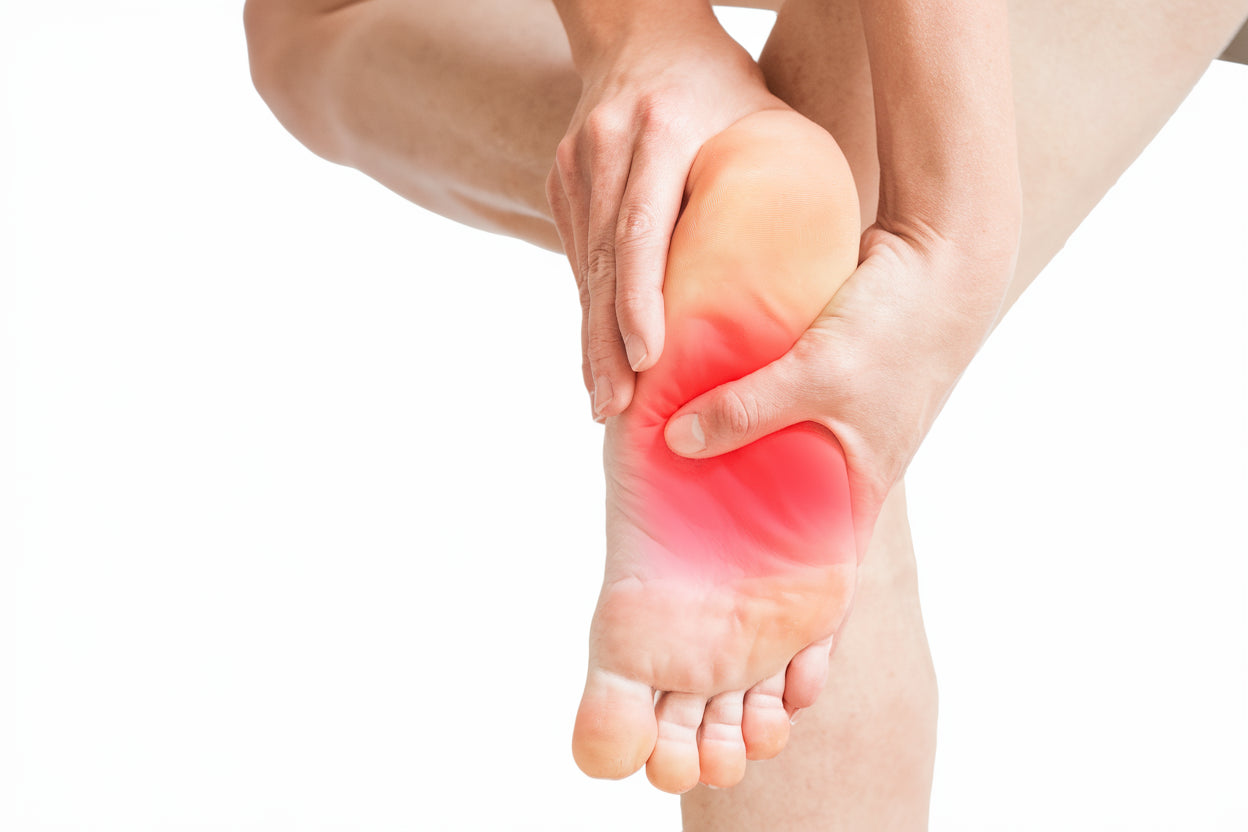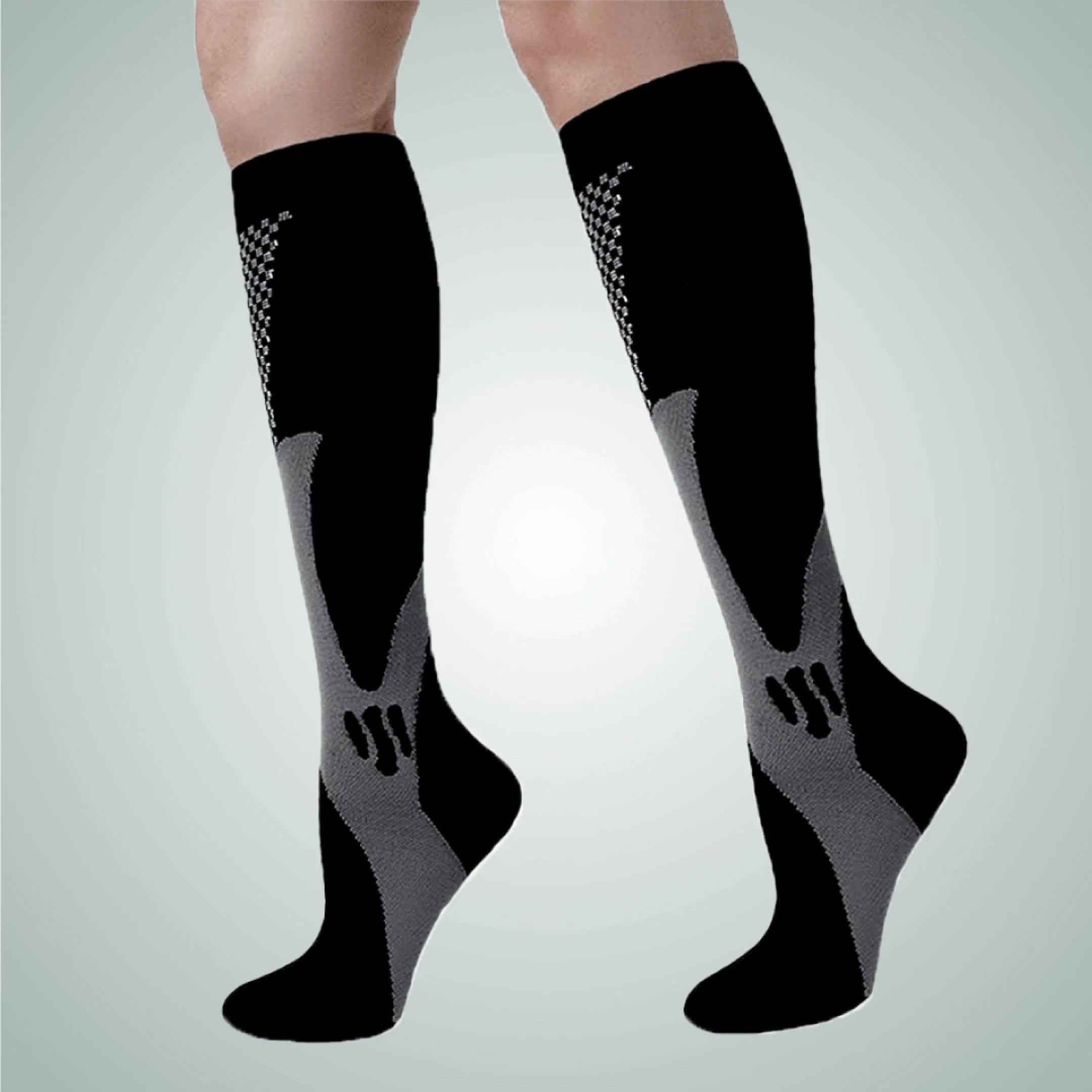Polyneuropathy in the Feet: Symptoms, Causes, and Treatment

Polyneuropathy is a disease that affects multiple nerves in the body, often starting in the feet. This nerve disease affects both sensation and movement, and can also affect the autonomic nerves that control the body's internal functions. This article reviews the most common symptoms, causes, and treatment options for polyneuropathy in the feet.
What is polyneuropathy and how does it affect the feet?
Polyneuropathy is a nerve disease that affects multiple nerves at the same time. It often affects the longest nerves in the body first, which explains why symptoms often begin in the feet. The disease attacks the nerve fibers, especially the outermost ones, and affects both sensation and motor functions.
There are several varieties of polyneuropathy, including:
- Diabetic neuropathy (most common cause)
- Hereditary polyneuropathy (where Skellefteå disease is an uncommon form of polyneuropathy in Sweden)
- Inflammatory polyneuropathy, such as Guillain-Barré syndrome
- Idiopathic polyneuropathy, where no underlying cause can be found
Polyneuropathy is caused by damage to the peripheral nerves that can spread symmetrically on both sides of the body and often affects both feet at the same time. In some cases, nerve damage can also occur in the foot .
Common symptoms of polyneuropathy in the feet
Common symptoms of polyneuropathy include:
- Reduced sensation and numbness in both feet
- Tingling and burning sensation in the feet and hands
- Feeling of walking on cushions (cushion sensation)
- Pain, especially with temperature changes
- Dry skin on the feet
- Balance problems that make it difficult to walk
- Muscle weakness in the feet and lower legs
- Worse sensation in the feet to touch
- Burning and stinging sensations
- Numbness that usually begins in the nerves of the legs
- Easy to stumble due to impaired proprioception
- Also autonomic symptoms such as effects on sweating and blood pressure
Many patients describe symptoms starting with a slight feeling of numbness in the toes or sole of the foot and then gradually spreading up the legs. Symptoms often occur first in the legs and feet before eventually spreading to other parts of the body. This can be reminiscent of burning feet .
Underlying causes of different forms of polyneuropathy
Polyneuropathy can be caused by several factors:
- Diabetes (diabetic neuropathy) – the most common cause of polyneuropathy
- Vitamin deficiency, especially B12
- Alcohol abuse
- Certain medications that can damage nerves
- Autoimmune diseases
- Infections
- Hereditary factors (the most common cause of hereditary polyneuropathy is Charcot-Marie-Tooth disease)
- Exposure to toxins, including heavy metals and nitrous oxide
- Chronic diseases such as kidney failure or liver disease
- Other diseases that can cause similar symptoms
In about 30% of cases, no clear cause is found, and the condition is called idiopathic neuropathy or idiopathic polyneuropathy. It is important to try to identify the underlying cause in order to direct treatment correctly. Some causes can also resemble conditions such as diabetic foot .
How do you know if you pronate? Diagnosis methods and treatment for overpronation
Overpronation means that your foot rolls inward more than normal when you walk or run. This can lead to imbalances in the body and pain in the feet, knees, or hips. Early diagnosis and proper treatment can reduce strain and improve foot stability.
Gait analysis
A gait analysis is performed to assess how the foot moves with each step.
Recommended treatment: Customized shoes with extra support that stabilize the arch of the foot.
4D insoles offer advanced shock absorption that adapts to your foot dynamics.
Shoe wear
Uneven wear on the soles of your shoes can be a clear sign of overpronation.
Recommended treatment: Physical therapy and strength training to strengthen the muscles of the foot.
4D support insoles are adjustable in size and shape, providing individual comfort and correction.
Footprint test
A footprint test shows how weight is distributed across the foot.
Recommended treatment: Customized insoles that support the arch of the foot.
4D support insoles use 4D cloud technology for optimal comfort and relief throughout the day.
X-ray if necessary
In case of prolonged discomfort, an X-ray can rule out skeletal or joint problems.
Recommended treatment: Taping of the foot to reduce overpronation.
4D support insoles also provide an acupressure-like massage effect, which stimulates circulation and relieves fatigue.
Signs of overpronation
Pain in the arch, heel, or inside of the foot
Uneven wear on shoes
Unstable feeling in the ankle
Tiredness in the legs and knees after long walks
If you experience these symptoms, 4D support insoles can provide quick relief and improved balance with every step.

How compression stockings can relieve the symptoms of polyneuropathy
Compression stockings from Komforten can be an effective aid for polyneuropathy by:
- Improve blood circulation in the feet and legs
- Reduce swelling and discomfort that can worsen symptoms
- Provide support during daily activities to reduce strain
- Potentially relieve some symptoms such as tingling and burning sensation
- Help protect the skin on your feet from damage
- Improve balance by providing proprioceptive feedback
Many patients with polyneuropathy find that compression stockings provide significant relief, especially for autonomic symptoms that affect blood circulation. For people who have difficulty walking due to polyneuropathy, compression stockings, in combination with other aids, can improve stability and reduce the risk of falls.
Buy nowResearch on polyneuropathy and future treatments
Polyneuropathy of the feet is a complex condition that requires professional diagnosis and treatment. While the underlying cause must be addressed, symptomatic treatment and supportive measures such as the use of compression stockings can help improve the quality of life for people with polyneuropathy. It is important to consult a doctor for a proper diagnosis and individualized treatment plan.
According to news about polyneuropathy and research on polyneuropathy supported by, among others, the Swedish Neurological Association for its research, progress is being made in understanding the disease and new treatment methods are being developed continuously. This development gives hope for better treatment options in the future.
Frequently Asked Questions (FAQ)
Can polyneuropathy be cured?
In some cases, if the underlying cause can be treated. For example, polyneuropathy caused by vitamin deficiency can often improve when the deficiency is corrected. Often, treatment focuses on managing symptoms and preventing worsening, especially in hereditary forms or idiopathic polyneuropathy.
How effective are compression stockings for polyneuropathy?
Compression stockings can help relieve some symptoms and improve circulation, but they do not cure the condition itself. They are particularly helpful for people with both polyneuropathy and venous problems, and can reduce swelling and improve comfort.
What type of doctor should I see if I suspect polyneuropathy?
A neurologist is often best placed to diagnose and treat polyneuropathy. In many cases, a team of specialists, including endocrinologists (for diabetes), physiotherapists and occupational therapists, is also involved for a comprehensive assessment and treatment.
Can diet affect polyneuropathy?
Yes, a balanced diet rich in B vitamins can help prevent or manage some types of polyneuropathy. Especially for people with diabetic neuropathy, diet is an important part of treatment, as good blood sugar control can slow the progression of the disease.
How often should I use compression stockings for polyneuropathy?
Frequency of use may vary, but many people use them daily, especially during periods of activity. Consult your doctor for personalized recommendations based on your specific symptoms and the underlying cause of your polyneuropathy.

